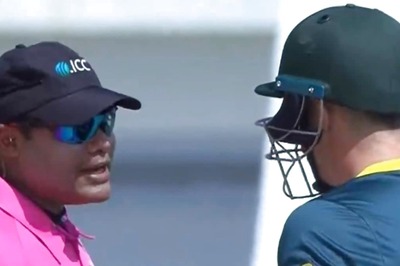
views
New Delhi: Over the last decade, India has taken close to 10 months to complete one recruitment cycle for civil judges following the three tier process as against the Supreme Court mandated deadline of five months, says a recently released report by a legal think tank.
According to the report ranking the appointments in the lower judiciary by Vidhi Centre for Legal Policy, India on average took 326 days to complete on recruitment cycle for civil judges.
Only Nagaland, Arunachal Pradesh, and Puducherry completed the recruitment cycle under 100 days, whereas states like Jammu & Kashmir and Delhi have taken up to 742 and 798 days respectively.
As per the SC verdict in the Malik Mazhar Sultan case of 2007, a two-tier process should take 153 days whereas a three-tier examination procedure should take around 273 days.
A two-tier process consists of a written exam and an interview, whereas a three-tier system comprises of a preliminary exam followed by a written test and an interview, for recruiting judges.
The report said there are 239 district judge vacancies across 15 states and Union Territories in 2017.
However, states like Kerala stood out as performers in the report. In Kerala, the judges selected were more than thrice the number of vacancies advertised. Even Arunachal Pradesh had no district judge vacancies in 2017.
Karnataka has the highest number of vacant positions, with 60 posts advertised as vacant.
This data driven assessment from 20 states also highlighted the fact that the publicly available data for each stage of the selection process is sparse, and severely inhibits research on the issue of lower judiciary appointments.
In 11 states, the total vacancies advertised were not filled. In some cases, such as Punjab and Sikkim, the candidates selected were more than twice the number of vacancies advertised.
The sanctioned strength of district and subordinate judges in India is approximately 21,000 today. Of these, approximately 4,800 positions are vacant.
Earlier this year, the apex court indicated it was looking into streamlining and standardising the process following a letter dated April 28, 2017, by the Secretary of the Department of Justice, Ministry of Law and Justice (Government of India) seeking directions.
Senior Advocate Arvind Datar too had submitted a concept note to the Supreme Court, elucidating on the need for a Central Selection Mechanism for the subordinate judiciary and laid down a structure for the same. Datar proposed a new exam DJURE (District Judges Recruitment Exam) to address this problem.
It was also suggested that a Central Selection Committee be constituted, for defining the policies for operation of DJURE. The Committee would comprise of five members, including a chairperson. All the members will be nominated by the Chief Justice of India and may include sitting or retired judges.
















Comments
0 comment